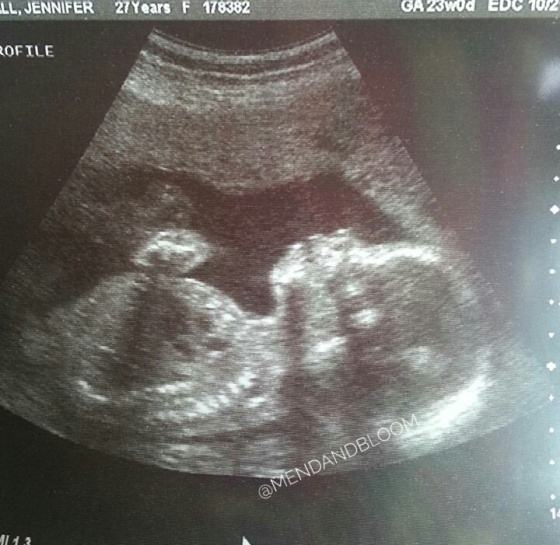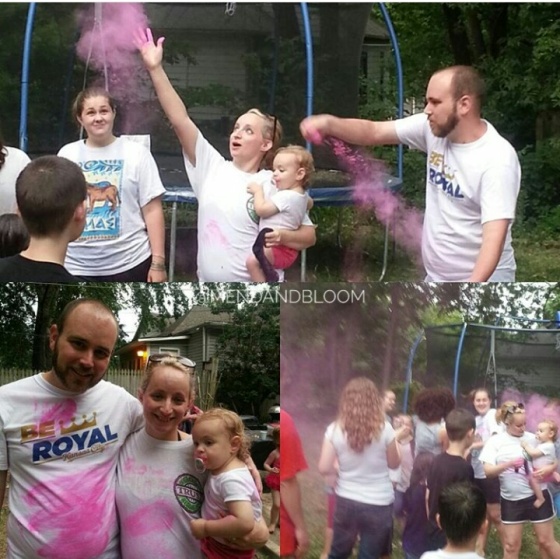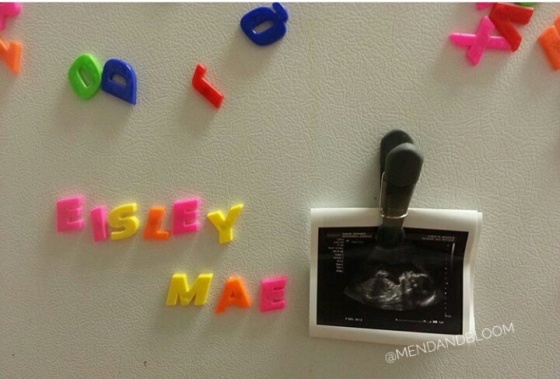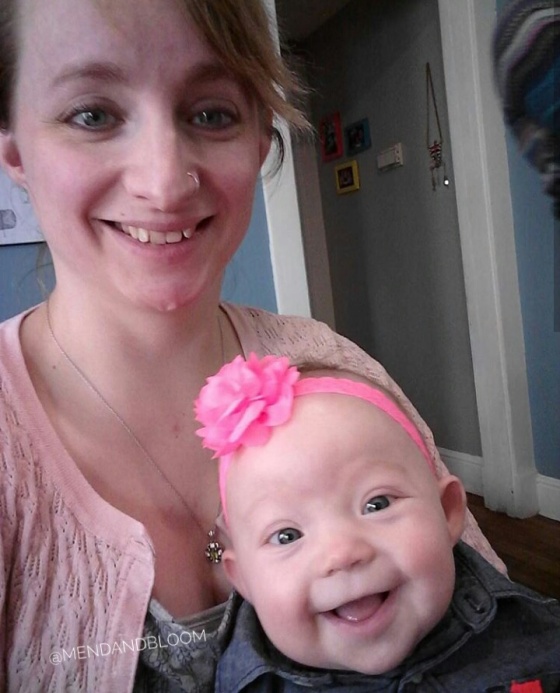“Ok, we’re all done,” the ultrasound tech told us. “I did see something fairly concerning, though.”
I steeled myself.
“Ok?” I replied.
“Have you ever heard of spina bifida?”
Honestly, the only context I had for spina bifida was Zola Grey Shepherd, the African orphan adopted by Derek and Meredith on Grey’s Anatomy. I had no idea what it was, but I knew Derek had fixed her with his magic neurosurgeon hands and she was a perfectly normal girl. But that was TV, and this was real life. Magic neurosurgeon hands like Derek Shepherd’s do not exist in real life.
The ultrasound tech had us wait in the waiting room, while she called our nurse practitioner across the building to alert her to our situation. As we waited, I began to cry. After a preterm delivery with Haven, all I wanted was a healthy baby and a normal delivery.
We waited.
Waited, and waited.
In the spina bifida world, they always say, stay off of Google. Google is your worst enemy. I couldn’t help myself. Sitting there with the name of a diagnosis but no knowledge except for Zola Shepherd was agonizing. I Googled.
A birth defect in which a developing baby’s spinal cord fails to develop properly.
Can’t be cured, but treatment may help.
Pictures of babies with round, open defects on their backs.
“What is spina bifida?” Josh asked me. “I don’t really know,” I told him. “But I know it’s not good.”
We were finally called back to speak with the nurse practitioner. She told us that the baby had a neural tube defect, and the ultrasound would be reviewed for further information for official diagnosis. She said that the defect was low, which usually means less of an impact on mobility.

I felt ridiculous for crying, but I just couldn’t believe this was happening. As we listened to the nurse practitioner, I sat with a tissue scrunched in my hand, wondering why we had to go through even more than we already had. Miscarriage. Premature birth and a NICU stay. Now, this???
As we left, we began to call our family and friends to let them know. I felt shattered. This baby I was carrying suddenly felt foreign. I felt like I was pregnant with a diagnosis, not with a baby.
We had asked the ultrasound tech to write down the gender and place it in an envelope, so we could be surprised at our gender reveal party two days later. After learning of the baby’s diagnosis, we questioned if we even wanted to do the party anymore. Hanging blue and pink decorations and cheerfully holding my belly in anticipation of learning if it was a boy or a girl was the last thing I felt like doing. But, we decided to go ahead with the party. I knew that if we just opened the envelope, we would be disappointed with how we found out, and we needed something to be fun.
The next day, as I drove back from the house of my friend who was hosting the party, I found myself alone in the car. The tears came slowly, then turned into sobs. It was the first time I really let myself vocalize the grief I felt. I don’t want this, I sobbed. It’s too much.
I couldn’t be the parent of a disabled kid. I had never even considered the possibility, but the reality was suddenly thrust upon me, and it felt overwhelming.
The next day, I was able to pull myself together a bit more. It was party day, and I was relieved that I would finally learn more about who this person was. I needed to bring my mind back to the baby, not the diagnosis.
We had planned a fun, backyard grill out for our gender reveal. A few days before, we gave the envelope with the gender to a friend, and she had ordered Holi powder, the colored powder used in the Indian festival called Holi, as well as in color runs. When I had envisioned this gender reveal months before, I imagined a cloud of pink or blue colored powder floating through the air. We had done silly string for Haven’s reveal, so I thought Holi powder was as least as fun, if not more fun, than silly string.
We ate burgers and macaroni salad, kids ran through the sprinkler, and friends made guesses about the baby’s gender. They all knew of the diagnosis, and solemn talk about what it meant for the baby was peppered in with the excitement of learning if it was a boy or a girl. I felt mostly happy, but the party was still tinged with sadness.
It was finally time. Our friend in the know brought out the men’s black dress socks filled with the powder (random, I know. It was the best solution I could come up with for a container that you could reach into but not see). Josh and I were given a sock each, and we reached in to pull the powder out to throw in the air. The sock bounced off of my belly, leaving a pink mark.
“It’s a girl! It’s a girl!” One of the kids yelled out. I was a little disappointed I didn’t find out with the cloud of colored powder I had imagined, but I threw it in the air, anyway. Everyone cheered. Socks were passed out to everyone, and a pink powder fight ensued. It was quickly realized that the best way to color fight was by hitting each other with the socks. It was as fun as it was hilarious.

I turned to Haven, on my hip. “You’re going to have a sister!”
The next day, we decided to name her. Just like with the gender reveal, we needed to know her as a person, as more than her diagnosis.
We decided on Eisley Mae, and made a fun video with Haven to announce it to our family and friends.

Over the next weeks and months, as we learned more about Eisley, spina bifida became less scary. We knew she would have to have surgery right after birth to close the defect, we knew that she would definitely have a NICU stay, and we knew that she might have issues with mobility and might need a shunt to drain the extra fluid from her brain.
But she was still Eisley, and as my sister reminded me, she was always meant to be a part of our family, and we were meant to be her parents. And I’m so thankful she is ours.

